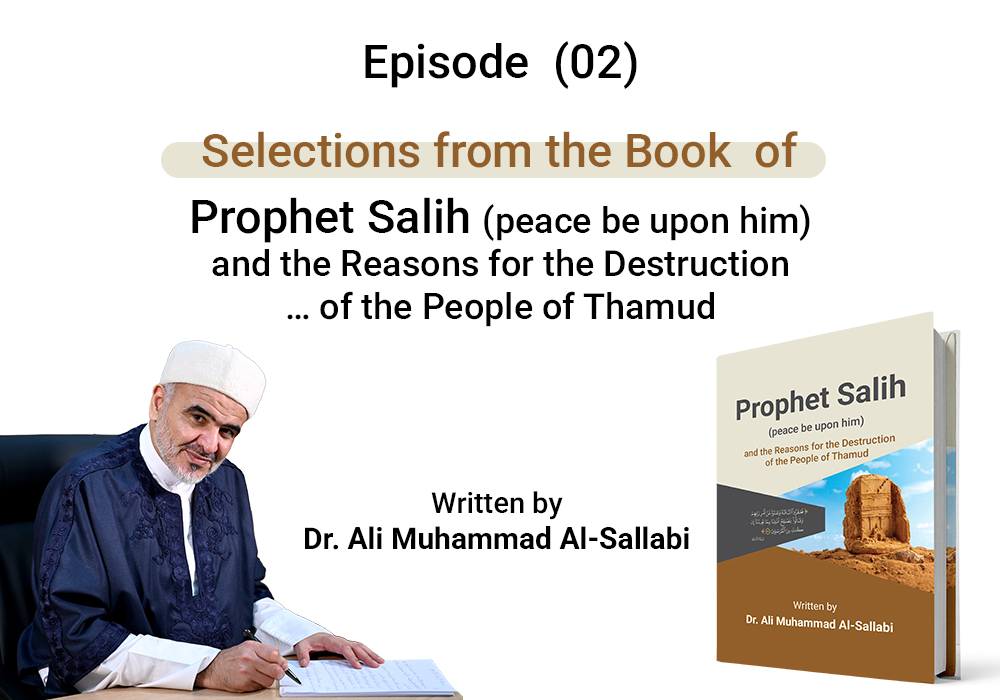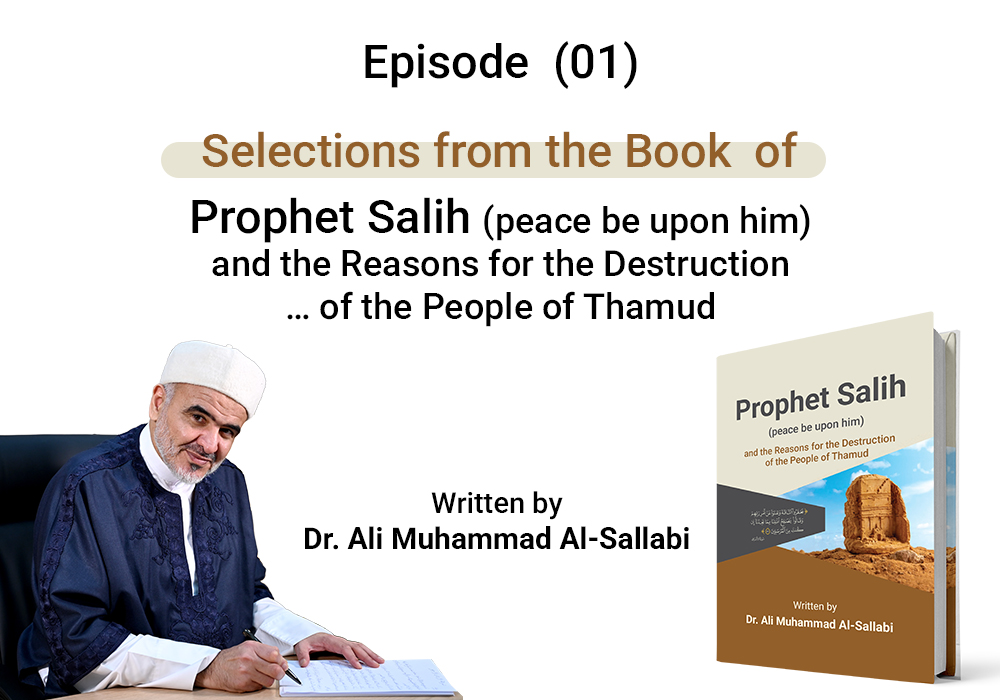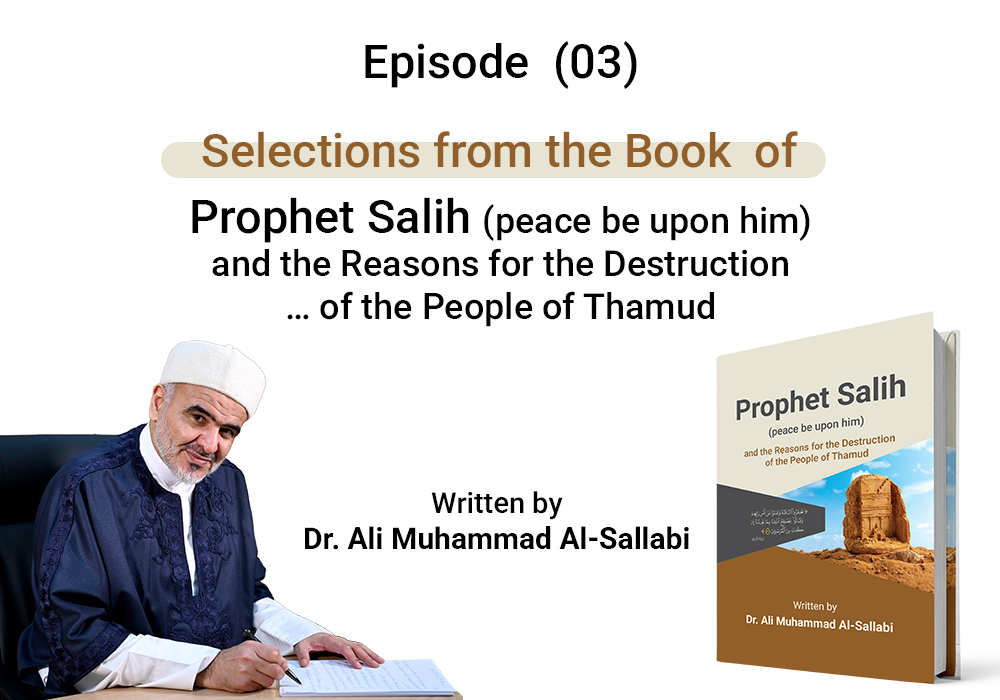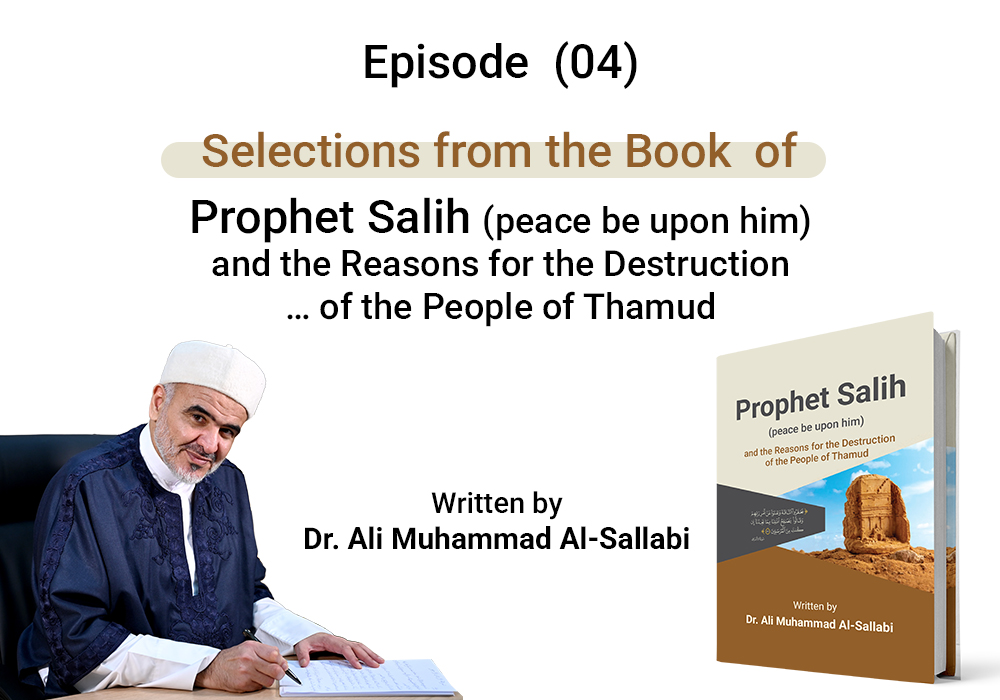Selections from the Book Prophet Salih (peace be upon him) and the Reasons for the Destruction of the People of Thamud …
Written by Dr. Ali Muhammad al-Sallabi...
Episode (02)
The ancient history books mention the Thamud people, and among the earliest to mention them was Sargon II. He spoke about the Thamud in his annals. King Sargon II (722-705 BCE) mentioned them among the tribes he fought against in a battle involving the Assyrians. These peoples in the annals claim that Sargon defeated his enemies and deported them to Samaria: "By the aid of Ashur, my lord, I subdued the Thamud, the Mersimani, and the Hiaba, the distant Arabs, the desert dwellers who did not recognize any chiefs or leaders and who did not pay tribute to any king. I took the living ones captive and brought them to Samaria."
This period was mentioned by the scholar, the late Mr. Suleiman Al-Nadwi, in his book History of the Land of the Quran. In the chapter about the second phase of the Thamud, that is, the remnants of the Thamud, when he mentioned Sargon or Sargon II, one of the Assyrian kings, and what he did to the Arab tribes, including the Thamud, he said: "This shows that the Thamud did not regain their strength in their new era. Even if they had regained some strength, they had weakened by then."
Diodorus (80 BCE), Pliny (79 CE), and Ptolemy (140 CE), among the Roman and Greek historians, also mentioned the Thamud. The name was pronounced "Thamudini" by Diodorus and "Thamuditi" by Ptolemy. The regions they identified for the Thamud confirm the reports about the Arabs. Dr. Schaeffer, when mentioning the Thamud, referred to another Greek author, Lanios, who testified that the Thamud lived next to the Nabataeans.
When the Romans took control of northern Arabia, the Thamud joined the Roman army during the reign of the Roman Emperor Justinian (ruled from 483 CE to 565 CE). There were 300 Thamud Arab soldiers in the Roman army, known for their long spears and famous camels. It seems that when the people of Midian took control of most of the Thamud lands, and the Nabataeans later took over what remained, the Romans decided to launch an attack on the Nabatean Arabs, which they successfully carried out. Hence, it is not surprising that the Thamud supported the Romans in their opposition to the Nabataeans.
Ancient historical books state that during the reign of King Sargon II, the Assyrian king, he launched an attack on northern Arabia and collected tribute from the Thamud in 700 BCE. After that, the Nabataeans took control of the Thamud lands before the time of Christ (peace be upon him). When the Romans attacked the Nabataeans, the Thamud supported the Romans. Because of this support, the Thamud are mentioned in the history of the Romans. When Islam appeared, the Thamud had no existence or trace left, as their lands were then inhabited by the tribes of Juhaynah, Banu Lahyan, and the Jews.
It can be said that the Thamud people lived in the 2nd century BCE until the end of the 2nd century CE in the land of Midian. Furthermore, we find them from the beginning of the 1st century CE in Hijaz, al-Jawf, and central Arabia, where they remained until the end of the 2nd century CE. If we add what can be inferred from Assyrian sources and references from Arab historians, it can be said that since the beginning of the 2nd century CE, the region inhabited by the Thamud gradually expanded to include northern and central Arabian lands, stretching from the Syrian borders in the north to close to the borders of Saba in the south.
As for Arab sources, they almost unanimously agree that the Thamud's settlement was in al-Hijr, extending to Wadi al-Qura between Hijaz and Sham.
Their connection to 'Aad implies their proximity in location, leading some to suggest that the Thamud lived between Sham and Hijaz, along the Red Sea coast and their lands in Faj al-Naqah. Their homes were carved into the mountains, and their ruins remained in their tombs, with visible traces along the pilgrimage route for those traveling to Sham in Wadi al-Qura.
- Ali Muhammad al-Sallabi, Prophet Salih (peace be upon him) and the Reasons for the Destruction of the People of Thamud, pp. 23-26.
- The Historical Existence of Prophets and the Controversy of Ecological Research, Sami Al-Amiri, 2021 AD, p. 506.
- Nihayat al-Arab in Knowing the Genealogies of the Arabs, Ahmad bin Abdullah Qalqashandi, Al-Najah Press, 2016 AD, p. 200.
- Dictionary of Countries, Yaqut al-Hamawi, Dar Sadir and Dar Beirut, 1404 AH - 1984 AD (4/338).
- History of the Land of the Quran, p. 196.
For further information and review of the sources for the article, see:
The Book of Prophet Salih (peace be upon him) and the Reasons for the Destruction of the People of Thamud on the official website of Sheikh Dr. Ali Muhammad al-Sallabi:





